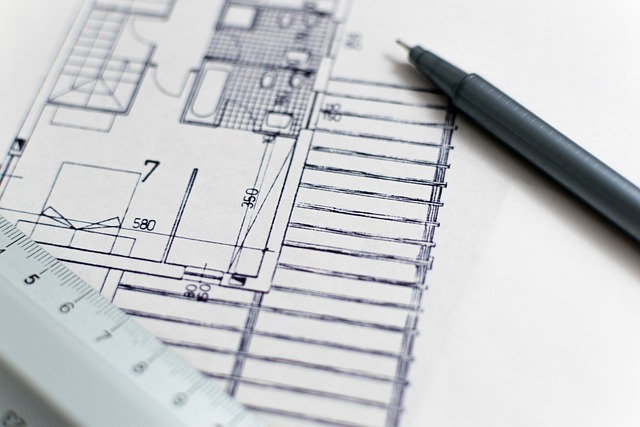Unlocking the Benefits of Value Engineering in Construction
Are you searching for ways to enhance the value and efficiency of your construction projects? Look no further. Value engineering is your answer to achieving remarkable cost savings without compromising quality. In this comprehensive guide, we will delve into the world of value engineering, its application in the construction industry, and how it can lead to successful project outcomes. Buckle up and prepare to unlock the benefits of value engineering in construction.
Short Summary
- Value engineering is an invaluable approach to construction projects which optimizes project value while reducing costs.
- The Value Engineering Process consists of 6 phases and requires collaboration between stakeholders for success.
- Various tools are used to facilitate the process, with real world examples demonstrating cost savings and increased project value.
Understanding Value Engineering

Value engineering is a systematic approach that has been transforming the construction industry since its inception in 1947 by Larry Miles at General Electric. This method aims to improve project value by providing essential functions at the lowest cost while maintaining quality, performance, and safety.
The application of value engineering in construction projects has led to remarkable cost savings and increased project value, making it an indispensable part of the construction process.
Definition and History
Value engineering is founded on the principle of achieving essential functions at the lowest life cycle cost while maintaining required performance, quality, reliability, and safety. Born during World War II, this method was developed by Lawrence Miles and Harry Ehrlicher of General Electric as a response to labor shortages, lack of materials, and limited component availability. Their approach, initially called value analysis, focused on reducing costs and producing better final products. Over time, this process evolved into modern-day value engineering we know today.
The history of value engineering is a testament to its resilience and adaptability. From its origins in response to wartime challenges to its current applications in the construction industry, value engineering has continued to evolve and adapt, providing cost-effective solutions while maintaining quality and performance.
Application in Construction

In the construction realm, value engineering is applied to optimize project value by identifying opportunities for cost savings without compromising project quality. This results in a competitive advantage for contractors and a remarkable return on investment for clients. Ideally, value engineering should be employed prior to the commencement of construction, during the design phase, to ensure maximum benefits.
The effectiveness of value engineering in construction relies on collaboration between project stakeholders, including owners, clients, design teams, contractors, and suppliers. By working together, these stakeholders can identify cost-saving opportunities, evaluate alternative solutions, and ultimately ensure the project achieves the highest value at the most cost-effective rate.
The Value Engineering Process

To better understand how value engineering can revolutionize construction projects, it’s essential to delve into its six-phase process: information gathering, functional analysis, creativity and innovation, evaluation, development, and presentation.
Each phase plays a critical role in analyzing and optimizing the project to achieve the desired outcomes.
Information Gathering
The initial information gathering phase is crucial to the value engineering process, as it focuses on understanding the contextual factors and decisions that have shaped the design. During this phase, the project owner’s objectives, key criteria, and definition of ‘value’ are ascertained, and key functional issues are assessed.
This enables project stakeholders to consider the function, associated costs, and effects of each element, laying the groundwork for a successful value engineering study.
Functional Analysis
Functional analysis is a key element of the value engineering process, as it enables the identification and comprehension of the project’s requirements. This phase involves evaluating the primary and secondary functions of the project, with the primary function carrying the highest importance and secondary functions holding lesser importance.
By understanding these functions, the value engineering team can better optimize the project to meet both cost and performance requirements.
Creativity and Innovation
The creativity and innovation phase is vital to the value engineering process, as it involves brainstorming creative ideas to achieve the necessary function at a lower cost. During this phase, all aspects of the project’s lifespan should be considered, such as safety, environmental factors, materials and tools, foundation type, and construction site analysis.
The objective is to generate innovative ideas that not only reduce initial costs but also enhance the overall project value.
Evaluation and Development
After the creative brainstorming phase, the value engineering team moves on to the evaluation and development stages, where ideas are refined and optimized for maximum value. In the evaluation phase, the team outlines criteria for evaluation, assesses the ideas generated from the creative session, eliminates impractical or unsuitable ideas, and develops ideas with the highest potential for cost savings and value enhancement.
A description of the suggested design change, evaluation of its advantages and disadvantages, cost comparison and lifecycle cost calculations are all part of the development phase. It is important to weigh these factors before any changes are made.
Presentation and Implementation
The final stages of the value engineering process are presentation and implementation. In the presentation phase, the value engineering team documents their findings and recommendations in a written report, presenting it to the client, users, and design team representatives in a briefing or oral presentation.
The implementation phase involves putting the recommendations into practice, ultimately achieving the goal of increasing value while reducing costs and preserving quality.
Key Players in Value Engineering

Value engineering relies on the collaboration and expertise of several key players, including owners and clients, the design team, and contractors and suppliers. Each stakeholder plays a crucial role in the value engineering process, and their combined efforts contribute to the overall success of the project.
Let’s explore the roles of each stakeholder in more detail.
Owners and Clients
Owners and clients initiate the value engineering process and define the goals and objectives for the project. They collaborate with the design team to generate construction documents and evaluate all project elements to guarantee that the client obtains maximum value for every dollar invested in the project.
Effective collaboration and communication between owners and clients and the design team is imperative for successful value engineering, as it facilitates the exchange of ideas and the formation of creative solutions that can cut costs and enhance the overall value of the project.
Design Team
The design team is integral to value engineering, as they assess design features, systems, equipment, and material selections to ensure essential functions are fulfilled at the lowest life cycle cost while meeting all performance, quality, reliability, and safety requirements. They collaborate with the owner and contractors to develop construction documents and cost estimates, ensuring that the project is completed within budget.
Collaboration and communication between the design team and other stakeholders is critical for successful value engineering. The design team must collaborate closely with the owner and contractors to guarantee that the design meets the project goals and objectives.
By leveraging estimating software, value engineering software, and triple bottom line analysis tools, the design team can assess design features and optimize the project for maximum value.
Contractors and Suppliers
Contractors and suppliers are integral to the value engineering process, providing their expertise in cost management, construction project planning, local planning requirements, materials, suppliers, procurement, and building management to the project team. Their knowledge and experience enable the identification and elimination of unwanted costs while improving function and quality.
Collaboration and communication between contractors and suppliers is paramount for successful value engineering, as it ensures that all parties are working towards a common goal and helps guarantee that the project is completed on time and within budget.
Maximizing Cost Savings and Project Value

To maximize cost savings and project value, it’s essential to strike a balance between quality and cost, be open to alternative solutions, and foster collaboration and communication among stakeholders.
By adhering to these principles, value engineering can revolutionize construction projects and lead to remarkable cost savings and increased project value.
Balancing Quality and Cost
Maintaining a balance between quality and cost is essential in any project or business, as it enables the development of a product or service that meets the required standards while being cost-effective for the target audience. In construction projects, this balance is particularly crucial, as the aim is to construct a high-quality building while staying within the budget.
Value engineering plays an important role in achieving this balance by providing the necessary functions at the lowest cost.
Openness to Alternatives
Being open to alternative solutions is essential in construction, as it facilitates the ability to be flexible and adaptable when making decisions. This openness can foster creativity and innovation by providing opportunities to explore and evaluate different approaches, leading to cost savings and improved functionality.
Considering alternatives is of great importance in construction due to the uniqueness and site-specificity of each project.
Collaboration and Communication
Collaboration and communication are crucial for the successful completion of construction projects. They enable the mitigation of misunderstandings, the prevention of conflicts, and the enhancement of comprehension of the project’s requirements. Optimal collaboration and communication among all stakeholders can result in fewer changes and rework, a higher likelihood of an on-time delivery, higher profits, and fewer wasted materials.
By fostering strong communication and collaboration among all stakeholders, value engineering can achieve its full potential and lead to significant cost savings and project value enhancement.
Tools and Technologies for Value Engineering

To effectively apply value engineering in construction projects, various tools and technologies are employed to streamline the process and optimize results. These tools include estimating software, value engineering software, and triple bottom line analysis tools.
Let’s explore each of these tools in more detail.
Estimating Software
Estimating software plays a vital role in value engineering, enabling precise cost forecasting, detecting opportunities for cost reduction, and optimizing efficiency. By providing detailed cost breakdowns and analysis, estimating software allows for more informed decisions to be made regarding cost reduction without compromising the quality of the project.
The utilization of estimating software can lead to faster completion times and cost savings, making it an indispensable tool in the value engineering process.
Value Engineering Software
Value engineering software is essential in value engineering as it can maximize efficiency, decrease costs, upgrade quality, and boost performance. Additionally, it can provide assistance with data analysis and visualization to facilitate decision-making.
Some popular value engineering software options include CostX, Primavera, and Microsoft Project. By leveraging value engineering software, construction professionals can analyze and optimize projects for maximum value.
Triple Bottom Line Analysis Tools
Triple bottom line analysis tools are essential in value engineering, as they enable a thorough assessment of a project’s effects on economic, social, and environmental elements. By evaluating the financial, social, and environmental costs and benefits associated with a project, these tools assist in guaranteeing that the project is sustainable and meets the requirements of all stakeholders.
Triple bottom line analysis tools play a critical role in ensuring that value engineering not only achieves cost savings but also promotes sustainable and responsible construction practices.
Real-World Examples of Value Engineering Success

Value engineering has been successfully applied across various industries, including construction and automotive, to enhance functionality and generate considerable cost savings. For example, in construction projects, value engineering techniques have been used to assess the most effective way to reach predetermined objectives.
In the business world, value engineering has been employed to reduce expenses while maintaining quality. These real-world examples showcase the transformative power of value engineering and its potential to revolutionize construction projects, leading to remarkable cost savings and increased project value.
Summary
In conclusion, value engineering is a powerful approach to enhancing the value and efficiency of construction projects. By employing a systematic process, collaborating with key stakeholders, and leveraging advanced tools and technologies, value engineering can achieve remarkable cost savings without compromising quality. By striking a balance between quality and cost, being open to alternative solutions, and fostering collaboration and communication among stakeholders, value engineering can revolutionize construction projects and lead to successful project outcomes. So why not unlock the benefits of value engineering in your next construction project and experience the difference firsthand?
Frequently Asked Questions
What are examples of value engineering?
Value engineering is an effective tool for assessing the costs associated with production, design, maintenance, and replacement. Examples of value engineering include framing estimating software and concrete estimating software, which can be used to identify cost savings while still meeting desired performance goals.
What is the aim of value engineering in construction?
The primary goal of value engineering in construction is to optimize the project’s quality and performance while reducing its overall cost, ultimately enhancing the project’s value. This is achieved by focusing on both design features and material selection to provide the best combination of performance, quality, reliability, safety, and cost.
What are the 6 phases of value engineering?
Value engineering is a highly structured methodology used to optimize the value of products, services or processes. It consists of six phases: information gathering, functional analysis, creative and innovative solutions, evaluation, development, and presentation.
These stages work together to help maximize the quality of products and services while reducing costs and time.
What is value engineering in BIM?
Value engineering in BIM is a systematic approach for managing construction projects in terms of cost, time and quality. It uses tools to identify cost savings without sacrificing project quality or safety. Value engineering helps ensure a project is completed successfully and within budget.2 Oct 2020.
Value Engineering in BIM is an analytical method that applies function-oriented analysis to identify and create the most cost-effective solutions for a given project. It aims to save time and money while adhering to building requirements and standards. Value Engineering also ensures the highest quality of the project output.2 October 2020.
Unlocking the Benefits of Value Engineering in Construction
Are you searching for ways to enhance the value and efficiency of your construction projects? Look no further. Value engineering is your answer to achieving remarkable cost savings without compromising quality. In this comprehensive guide, we will delve into the world of value engineering, its application in the construction industry, and how it can lead to successful project outcomes. Buckle up and prepare to unlock the benefits of value engineering in construction.
Short Summary
- Value engineering is an invaluable approach to construction projects which optimizes project value while reducing costs.
- The Value Engineering Process consists of 6 phases and requires collaboration between stakeholders for success.
- Various tools are used to facilitate the process, with real world examples demonstrating cost savings and increased project value.
Understanding Value Engineering

Value engineering is a systematic approach that has been transforming the construction industry since its inception in 1947 by Larry Miles at General Electric. This method aims to improve project value by providing essential functions at the lowest cost while maintaining quality, performance, and safety.
The application of value engineering in construction projects has led to remarkable cost savings and increased project value, making it an indispensable part of the construction process.
Definition and History
Value engineering is founded on the principle of achieving essential functions at the lowest life cycle cost while maintaining required performance, quality, reliability, and safety. Born during World War II, this method was developed by Lawrence Miles and Harry Ehrlicher of General Electric as a response to labor shortages, lack of materials, and limited component availability. Their approach, initially called value analysis, focused on reducing costs and producing better final products. Over time, this process evolved into modern-day value engineering we know today.
The history of value engineering is a testament to its resilience and adaptability. From its origins in response to wartime challenges to its current applications in the construction industry, value engineering has continued to evolve and adapt, providing cost-effective solutions while maintaining quality and performance.
Application in Construction

In the construction realm, value engineering is applied to optimize project value by identifying opportunities for cost savings without compromising project quality. This results in a competitive advantage for contractors and a remarkable return on investment for clients. Ideally, value engineering should be employed prior to the commencement of construction, during the design phase, to ensure maximum benefits.
The effectiveness of value engineering in construction relies on collaboration between project stakeholders, including owners, clients, design teams, contractors, and suppliers. By working together, these stakeholders can identify cost-saving opportunities, evaluate alternative solutions, and ultimately ensure the project achieves the highest value at the most cost-effective rate.
The Value Engineering Process

To better understand how value engineering can revolutionize construction projects, it’s essential to delve into its six-phase process: information gathering, functional analysis, creativity and innovation, evaluation, development, and presentation.
Each phase plays a critical role in analyzing and optimizing the project to achieve the desired outcomes.
Information Gathering
The initial information gathering phase is crucial to the value engineering process, as it focuses on understanding the contextual factors and decisions that have shaped the design. During this phase, the project owner’s objectives, key criteria, and definition of ‘value’ are ascertained, and key functional issues are assessed.
This enables project stakeholders to consider the function, associated costs, and effects of each element, laying the groundwork for a successful value engineering study.
Functional Analysis
Functional analysis is a key element of the value engineering process, as it enables the identification and comprehension of the project’s requirements. This phase involves evaluating the primary and secondary functions of the project, with the primary function carrying the highest importance and secondary functions holding lesser importance.
By understanding these functions, the value engineering team can better optimize the project to meet both cost and performance requirements.
Creativity and Innovation
The creativity and innovation phase is vital to the value engineering process, as it involves brainstorming creative ideas to achieve the necessary function at a lower cost. During this phase, all aspects of the project’s lifespan should be considered, such as safety, environmental factors, materials and tools, foundation type, and construction site analysis.
The objective is to generate innovative ideas that not only reduce initial costs but also enhance the overall project value.
Evaluation and Development
After the creative brainstorming phase, the value engineering team moves on to the evaluation and development stages, where ideas are refined and optimized for maximum value. In the evaluation phase, the team outlines criteria for evaluation, assesses the ideas generated from the creative session, eliminates impractical or unsuitable ideas, and develops ideas with the highest potential for cost savings and value enhancement.
A description of the suggested design change, evaluation of its advantages and disadvantages, cost comparison and lifecycle cost calculations are all part of the development phase. It is important to weigh these factors before any changes are made.
Presentation and Implementation
The final stages of the value engineering process are presentation and implementation. In the presentation phase, the value engineering team documents their findings and recommendations in a written report, presenting it to the client, users, and design team representatives in a briefing or oral presentation.
The implementation phase involves putting the recommendations into practice, ultimately achieving the goal of increasing value while reducing costs and preserving quality.
Key Players in Value Engineering

Value engineering relies on the collaboration and expertise of several key players, including owners and clients, the design team, and contractors and suppliers. Each stakeholder plays a crucial role in the value engineering process, and their combined efforts contribute to the overall success of the project.
Let’s explore the roles of each stakeholder in more detail.
Owners and Clients
Owners and clients initiate the value engineering process and define the goals and objectives for the project. They collaborate with the design team to generate construction documents and evaluate all project elements to guarantee that the client obtains maximum value for every dollar invested in the project.
Effective collaboration and communication between owners and clients and the design team is imperative for successful value engineering, as it facilitates the exchange of ideas and the formation of creative solutions that can cut costs and enhance the overall value of the project.
Design Team
The design team is integral to value engineering, as they assess design features, systems, equipment, and material selections to ensure essential functions are fulfilled at the lowest life cycle cost while meeting all performance, quality, reliability, and safety requirements. They collaborate with the owner and contractors to develop construction documents and cost estimates, ensuring that the project is completed within budget.
Collaboration and communication between the design team and other stakeholders is critical for successful value engineering. The design team must collaborate closely with the owner and contractors to guarantee that the design meets the project goals and objectives.
By leveraging estimating software, value engineering software, and triple bottom line analysis tools, the design team can assess design features and optimize the project for maximum value.
Contractors and Suppliers
Contractors and suppliers are integral to the value engineering process, providing their expertise in cost management, construction project planning, local planning requirements, materials, suppliers, procurement, and building management to the project team. Their knowledge and experience enable the identification and elimination of unwanted costs while improving function and quality.
Collaboration and communication between contractors and suppliers is paramount for successful value engineering, as it ensures that all parties are working towards a common goal and helps guarantee that the project is completed on time and within budget.
Maximizing Cost Savings and Project Value

To maximize cost savings and project value, it’s essential to strike a balance between quality and cost, be open to alternative solutions, and foster collaboration and communication among stakeholders.
By adhering to these principles, value engineering can revolutionize construction projects and lead to remarkable cost savings and increased project value.
Balancing Quality and Cost
Maintaining a balance between quality and cost is essential in any project or business, as it enables the development of a product or service that meets the required standards while being cost-effective for the target audience. In construction projects, this balance is particularly crucial, as the aim is to construct a high-quality building while staying within the budget.
Value engineering plays an important role in achieving this balance by providing the necessary functions at the lowest cost.
Openness to Alternatives
Being open to alternative solutions is essential in construction, as it facilitates the ability to be flexible and adaptable when making decisions. This openness can foster creativity and innovation by providing opportunities to explore and evaluate different approaches, leading to cost savings and improved functionality.
Considering alternatives is of great importance in construction due to the uniqueness and site-specificity of each project.
Collaboration and Communication
Collaboration and communication are crucial for the successful completion of construction projects. They enable the mitigation of misunderstandings, the prevention of conflicts, and the enhancement of comprehension of the project’s requirements. Optimal collaboration and communication among all stakeholders can result in fewer changes and rework, a higher likelihood of an on-time delivery, higher profits, and fewer wasted materials.
By fostering strong communication and collaboration among all stakeholders, value engineering can achieve its full potential and lead to significant cost savings and project value enhancement.
Tools and Technologies for Value Engineering

To effectively apply value engineering in construction projects, various tools and technologies are employed to streamline the process and optimize results. These tools include estimating software, value engineering software, and triple bottom line analysis tools.
Let’s explore each of these tools in more detail.
Estimating Software
Estimating software plays a vital role in value engineering, enabling precise cost forecasting, detecting opportunities for cost reduction, and optimizing efficiency. By providing detailed cost breakdowns and analysis, estimating software allows for more informed decisions to be made regarding cost reduction without compromising the quality of the project.
The utilization of estimating software can lead to faster completion times and cost savings, making it an indispensable tool in the value engineering process.
Value Engineering Software
Value engineering software is essential in value engineering as it can maximize efficiency, decrease costs, upgrade quality, and boost performance. Additionally, it can provide assistance with data analysis and visualization to facilitate decision-making.
Some popular value engineering software options include CostX, Primavera, and Microsoft Project. By leveraging value engineering software, construction professionals can analyze and optimize projects for maximum value.
Triple Bottom Line Analysis Tools
Triple bottom line analysis tools are essential in value engineering, as they enable a thorough assessment of a project’s effects on economic, social, and environmental elements. By evaluating the financial, social, and environmental costs and benefits associated with a project, these tools assist in guaranteeing that the project is sustainable and meets the requirements of all stakeholders.
Triple bottom line analysis tools play a critical role in ensuring that value engineering not only achieves cost savings but also promotes sustainable and responsible construction practices.
Real-World Examples of Value Engineering Success

Value engineering has been successfully applied across various industries, including construction and automotive, to enhance functionality and generate considerable cost savings. For example, in construction projects, value engineering techniques have been used to assess the most effective way to reach predetermined objectives.
In the business world, value engineering has been employed to reduce expenses while maintaining quality. These real-world examples showcase the transformative power of value engineering and its potential to revolutionize construction projects, leading to remarkable cost savings and increased project value.
Summary
In conclusion, value engineering is a powerful approach to enhancing the value and efficiency of construction projects. By employing a systematic process, collaborating with key stakeholders, and leveraging advanced tools and technologies, value engineering can achieve remarkable cost savings without compromising quality. By striking a balance between quality and cost, being open to alternative solutions, and fostering collaboration and communication among stakeholders, value engineering can revolutionize construction projects and lead to successful project outcomes. So why not unlock the benefits of value engineering in your next construction project and experience the difference firsthand?
Frequently Asked Questions
What are examples of value engineering?
Value engineering is an effective tool for assessing the costs associated with production, design, maintenance, and replacement. Examples of value engineering include framing estimating software and concrete estimating software, which can be used to identify cost savings while still meeting desired performance goals.
What is the aim of value engineering in construction?
The primary goal of value engineering in construction is to optimize the project’s quality and performance while reducing its overall cost, ultimately enhancing the project’s value. This is achieved by focusing on both design features and material selection to provide the best combination of performance, quality, reliability, safety, and cost.
What are the 6 phases of value engineering?
Value engineering is a highly structured methodology used to optimize the value of products, services or processes. It consists of six phases: information gathering, functional analysis, creative and innovative solutions, evaluation, development, and presentation.
These stages work together to help maximize the quality of products and services while reducing costs and time.
What is value engineering in BIM?
Value engineering in BIM is a systematic approach for managing construction projects in terms of cost, time and quality. It uses tools to identify cost savings without sacrificing project quality or safety. Value engineering helps ensure a project is completed successfully and within budget.2 Oct 2020.
Value Engineering in BIM is an analytical method that applies function-oriented analysis to identify and create the most cost-effective solutions for a given project. It aims to save time and money while adhering to building requirements and standards. Value Engineering also ensures the highest quality of the project output.2 October 2020.
Comments are closed